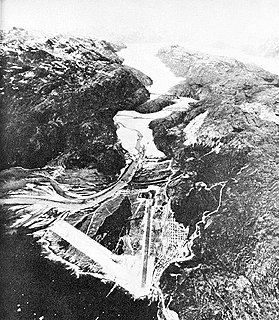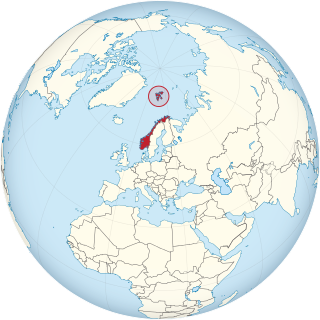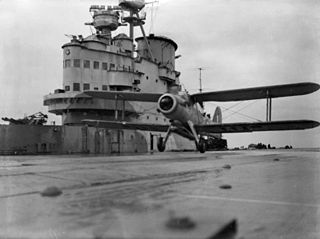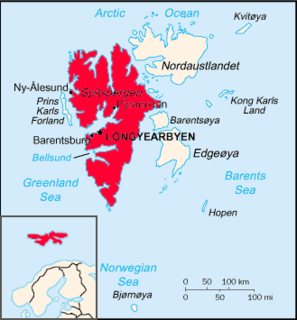 W
WThe Arctic Circle defining the "midnight sun" encompasses the Atlantic Ocean from the northern edge of Iceland to the Bering Strait in the Pacific Ocean. Military activity in this area between 1939 and 1945 is often considered part of the Battle of the Atlantic or of the European Theatre of World War II. Pre-war navigation focused on fishing and the international ore-trade from Narvik and Petsamo. Soviet settlements along the coast and rivers of the Barents Sea and Kara Sea relied upon summer coastal shipping for supplies from railheads at Arkhangelsk and Murmansk. The Soviet Union extended the Northern Sea Route past the Taymyr Peninsula to the Bering Strait in 1935.
 W
WBluie was the United States military code name for Greenland during World War II. It is remembered by the numbered sequence of base locations identified by the 1941 United States Coast Guard South Greenland Survey Expedition, and subsequently used in radio communications by airmen unfamiliar with pronunciation of the Inuit and Old Norse names of those locations. These were typically spoken BLUIE (direction) (number), with direction being east or west along the Greenland coast from Cape Farewell.Bluie East One: Torgilsbu radio and weather station at 60°9′N 43°53′W near Aqissiat on Prince Christian Sound Bluie East Two: Ikateq airfield with radio and weather station at 65°56′43″N 36°39′45″W Bluie East Three: Gurreholm radio and weather station at 70°30′N 25°00′W on Scoresby Sund Bluie East Four: Ella Island radio, weather, and sledge patrol station at 72°51′N 25°00′W Bluie East Five: Eskimonæs radio and weather station captured by German troops in 1943 and later reestablished at Myggbukta 73°29′28″N 21°32′26″W Bluie West One: Narsarsuaq Air Base at 61°10′N 45°26′W Bluie West Two: Kipisako unused alternative airfield location on Coppermine Bay Bluie West Three: Simiutak HF/DF station at 60°41′N 46°34′W Bluie West Four: Marrak Point radio and weather station at 63°27′N 51°11′W Bluie West Five: Aasiaat radio and weather station at 68°42′35″N 52°52′10″W on Disko Island Bluie West Six: Thule radio and weather station at 76°31′52″N 068°42′11″W Bluie West Seven: Kangilinnguit base at 61°14′00″N 48°05′55″W to defend the Ivittuut cryolite mine Bluie West Eight: Sondrestrom Air Base at 67°00′38″N 50°42′33″W Bluie West Nine: Cruncher Island light and radio beacon at 66°03′N 53°36′W
 W
WThe Greenland Patrol was a United States Coast Guard operation during World War II. The patrol was formed to support the U.S. Army building aerodrome facilities in Greenland for ferrying aircraft to the British Isles, and to defend Greenland with special attention to preventing German operations in the northeast. Coast Guard cutters were assisted by aircraft and dog sled teams patrolling the Greenland coast for Axis military activities. The patrol escorted Allied shipping to and from Greenland, built navigation and communication facilities, and provided rescue and weather ship services in the area from 1941 through 1945.
 W
WThe Arctic convoys of World War II were oceangoing convoys which sailed from the United Kingdom, Iceland, and North America to northern ports in the Soviet Union – primarily Arkhangelsk (Archangel) and Murmansk in Russia. There were 78 convoys between August 1941 and May 1945, sailing via several seas of the Atlantic and Arctic oceans, with two gaps with no sailings between July and September 1942, and March and November 1943.
 W
WThe Battle of the Barents Sea was a World War II naval engagement on 31 December 1942 between warships of the German Navy (Kriegsmarine) and British ships escorting convoy JW 51B to Kola Inlet in the USSR. The action took place in the Barents Sea north of North Cape, Norway. The German raiders' failure to inflict significant losses on the convoy infuriated Hitler, who ordered that German naval strategy would henceforth concentrate on the U-boat fleet rather than surface ships.
 W
WOperation Claymore was a British commando raid on the Norwegian Lofoten Islands during the Second World War. The Lofoten Islands were an important centre for the production of fish oil and glycerine, used in the German war economy. The landings were carried out on 4 March 1941, by the men of No. 3 Commando, No. 4 Commando, a Royal Engineers section and 52 men from the Norwegian Independent Company 1. Supported by the 6th Destroyer Flotilla and two troop transports of the Royal Navy, the force made an unopposed landing and generally continued to meet no opposition. The original plan was to avoid contact with German forces and inflict the maximum of damage to German-controlled industry. They achieved their objective of destroying fish oil factories and some 3,600 t of oil and glycerine. The British experienced only one accident; an officer injuring himself with his own revolver and returned with some 228 German prisoners, 314 loyal Norwegian volunteers and a number of Quisling regime collaborators.
 W
WOperation FB took place as part of the Arctic Convoys of World War II. The operation consisted of independent sailings by unescorted merchant ships between Iceland and Murmansk. In late 1942, Allies had taken the offensive against Germany but the dispatch of supplies to the USSR by convoy via the Arctic route was suspended, due to the demands of the Mediterranean campaign. Convoy PQ 19 was cancelled because the Home Fleet diverted ships to the Mediterranean for Operation Torch which would have had to be postponed for three weeks had ships been provided for PQ 19.
 W
WOperation Fritham was an Allied military operation during the Second World War to secure the coal mines on Spitsbergen, the main island of the Svalbard Archipelago, 650 mi (1,050 km) from the North Pole and about the same distance from Norway. The operation was intended to deny the islands to Nazi Germany.
 W
WOperation Gauntlet was an Allied Combined Operation from 25 August until 3 September 1941, during the Second World War. Canadian, British and Free Norwegian Forces landed on the Norwegian island of Spitsbergen in the Svalbard Archipelago, 650 mi (1,050 km) south of the North Pole.
 W
WOperation Gearbox was a Norwegian and British operation on the Arctic island of Spitzbergen in the Svalbard Archipelago, during the Second World War. Operation Fritham, an earlier expedition in two ships, arrived on 13 May but met disaster after being spotted by a Luftwaffe Ju 88 bomber. Next day, four Fw 200 reconnaissance bombers attacked and killed fourteen men, including Einar Sverdrup, the commander. Eleven men were wounded, two mortally, one ship was sunk and the other set on fire.
 W
WOperation Gearbox II was a Norwegian and British operation during the Second World War on the Arctic island of Spitzbergen in the Svalbard Archipelago. Operation Fritham, the first attempt to establish a base had been defeated when the two ships carrying the force were sunk by Luftwaffe bombers on 14 May.
 W
WThe Battle of the North Cape was a Second World War naval battle which occurred on 26 December 1943, as part of the Arctic campaign. German battleship Scharnhorst, on an operation to attack Arctic Convoys of war materiel from the Western Allies to the Soviet Union, was brought to battle and sunk by the Royal Navy – the battleship HMS Duke of York with cruisers and destroyers including an onslaught from the HNoMS Stord of the exiled Royal Norwegian Navy – off Norway's North Cape.
 W
WOperation Source was a series of attacks to neutralise the heavy German warships – Tirpitz, Scharnhorst and Lützow – based in northern Norway, using X-class midget submarines.
 W
WOperation Sportpalast was the first German attempt to disrupt an Allied Arctic convoy in early March 1942, targeting PQ 12 and QP 8 led by German battleship Tirpitz and its escorting destroyers.
 W
WOperation Wunderland comprised a large-scale operation undertaken in summer 1942 by the German Kriegsmarine in the waters of the Northern Sea Route close to the Arctic Ocean. The Germans knew that many ships of the Soviet Navy had sought refuge in the Kara Sea because of the protection that its ice pack provided during 10 months of the year.
 W
WOperation Zitronella, also known as Unternehmen Sizilien (Sicily), was an eight-hour German raid on Spitzbergen, in the Svalbard Archipelago, on 8 September 1943. The battleships Tirpitz and Scharnhorst, plus nine destroyers, sailed to the archipelago, bombarded settlements in Isfjorden and covered a landing party. Six Norwegians were killed and 31 were taken prisoner; one German died of wounds and fifteen were wounded.